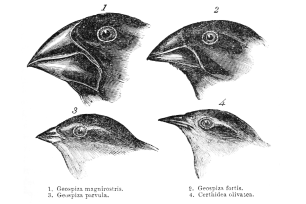Redefining what it means to be a prion
CAMBRIDGE, Mass. –Whitehead Institute researchers have quintupled the number of identifiable prion proteins in yeast and have further clarified the role prions play in the inheritance of both beneficial and detrimental traits.
“The big debate in the field is are the prions functional – are they evolved to be prions, or are they always a disease, as in “mad cow'” disease in mammals,” says Randal Halfmann, a graduate student in Whitehead Member Susan Lindquist’s lab, and co-author of the paper featured in the April 3 issue of the journal Cell. “We wanted to find more prions and see what they’re doing, so we could answer that question.”
The Lindquist lab’s work further alters the way researchers view prions, from biological anomalies to mediators of trait inheritance and adaptations to fluctuating environments.
Prions’ bad reputation was fixed in the public’s mind by “mad cow disease”. In the late 1980s, an unidentified disease infected more than 100,000 British cattle and spread to humans, eventually killing more than 200 people. The disease causes progressive degeneration of mental abilities, which ultimately lead to death.
Scientists found the infectious agent was a prion, a misfolded version of the PrP protein found clumped together in brain cells. Brain matter in PrP-infected animals takes on a spongy appearance, lending the condition its formal name, bovine spongiform encephalopathy (BSE).
Unlike other proteins, the misfolded PrP protein is transmissible. When the misfolded PrP protein is introduced into healthy cells, it can convert normally folded PrP proteins to its misfolded shape and cause a clumping cascade characteristic of prions.
Over the years, researchers have identified other degenerative diseases caused by PrP in humans and other animals, including scrapie in sheep and goats, and Creutzfeldt-Jakob disease in humans. A few other prions have also been found in model organisms, such as yeast.
Believing the number of prions in yeast is higher than the four identified, researchers in Lindquist’s lab devised high-throughput methods to scan the entire yeast genome, detect probable prion-coding sequences, and confirm that the resulting proteins are in fact prions. Lindquist says, “The approach required a lot of assay development and a great deal of work but the results were very exciting.”
The bioinformatic scan located about 200 candidate prion-coding sequences in the yeast genome. The top 100 candidate proteins were tested for up to three hallmarks of prions: their tendency in cells to form clumps that remain intact when exposed to a detergent capable of unfolding most proteins; the ability of the proteins to clump in a test tube in the absence other cellular factors; and the ability of the clumps to replicate indefinitely in cells.
Applying their set of tests, the researchers found 24 prion candidates satisfactorily meeting these criteria. Included in that number were all four of the known yeast prions.
“No one had taken such a broad approach to look for prions in any genome,” says Simon Alberti, a Lindquist postdoctoral researcher and co-author of the paper. “And the results from work in yeast cells, and the in vitro work overlapped and supported each other very nicely.”
Alberti and Halfmann hypothesize that prions in yeast prepare individual organisms for changes in the environment. Prions in cells are known to switch back and forth between a clumping, infectious stage and a non-infectious stage. When yeast is stressed, this switching occurs at a higher rate, which may give the yeast a better chance to adapt to challenging conditions.
For example, if a grape dusted with yeast falls from the vine and into a puddle, the waterlogged yeast’s environment changes drastically. Various prions in the yeast cells will have switched from inactive to active or active to inactive to ensure that some of the cells survive under water. Some of those activation switches help the yeast, but some do not.
“We think that the fact that prions are sometimes beneficial and sometimes detrimental for the yeast is at the heart of their biology – that they present a sort of bet-hedging strategy, where in some circumstances it’s good to be in the prion state and in some cases it’s not,” says Whitehead Member and Howard Hughes Medical Institute Investigator Susan Lindquist.
This research opens several additional avenues of study, including the application of similar strategies to find additional yeast prions, thorough testing of prions in vivo and in vitro, and scanning of other organisms’ genomes for prion candidates.
This work was funded by the G. Harold and Leila Y. Mathers Foundation, the National Institutes of Health (NIH), the Deutsche Forschungsgemeinschaft (DFG), and the National Science Foundation (NSF).
* * *
Susan Lindquist’s primary affiliation is with Whitehead Institute for Biomedical Research, where her laboratory is located and all her research is conducted. She is also a Howard Hughes Medical Institute investigator and a professor of biology at Massachusetts Institute of Technology.
* * *
Citation
Alberti, S., Halfmann, R., King, O., Kapila, A., & Lindquist, S. (2009). A systematic survey identifies prions and illuminates sequence features of prionogenic proteins. Cell, 137(1), 146-158.
Contact
Communications and Public Affairs
Phone: 617-452-4630
Email: newsroom@wi.mit.edu



